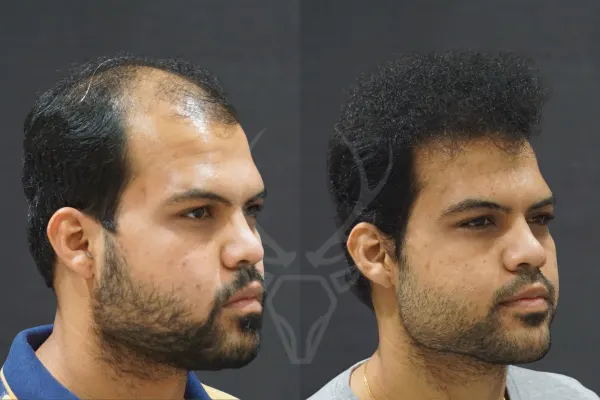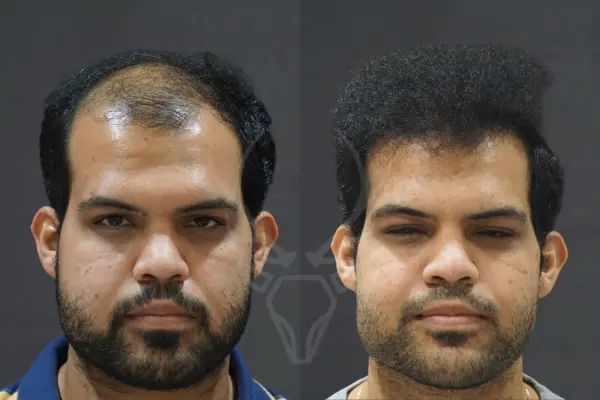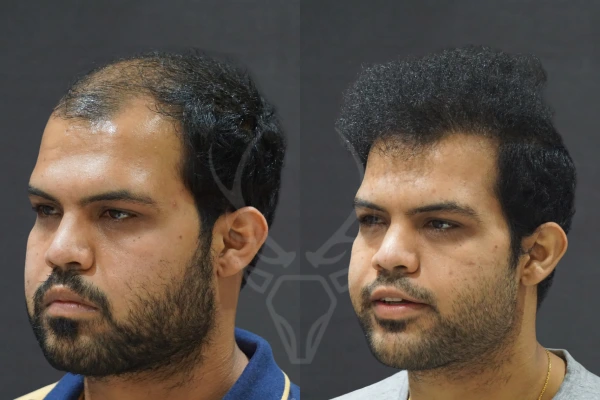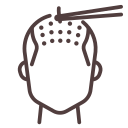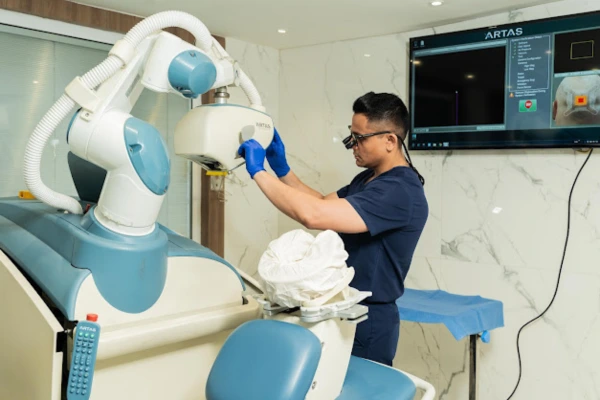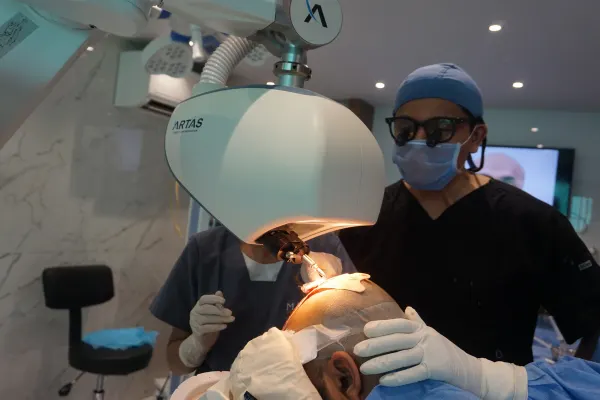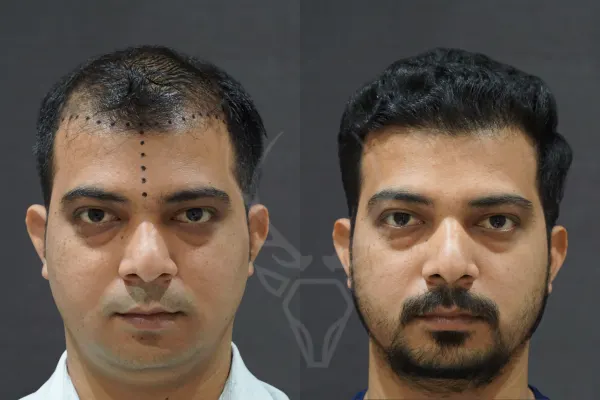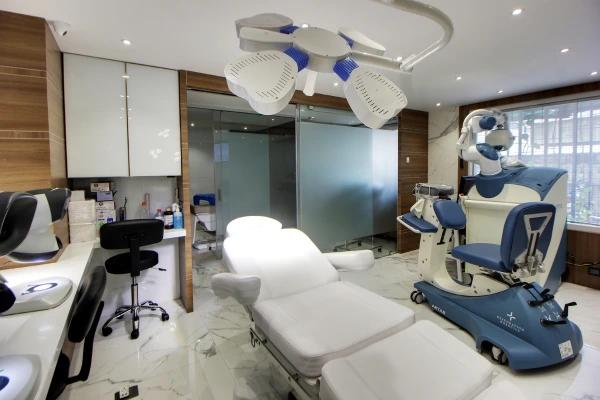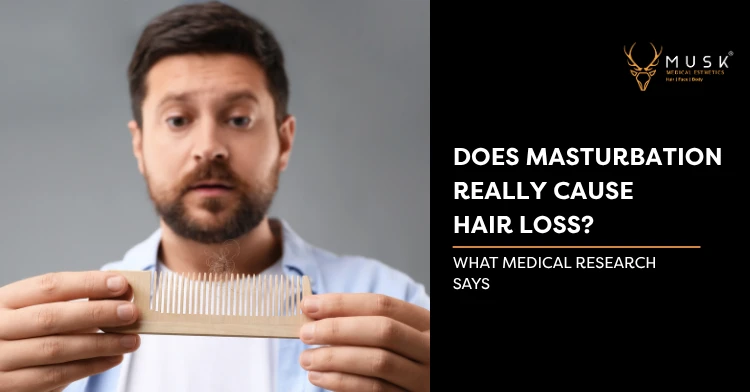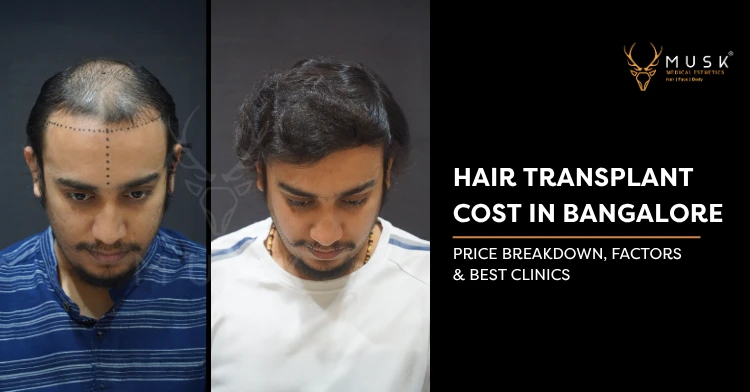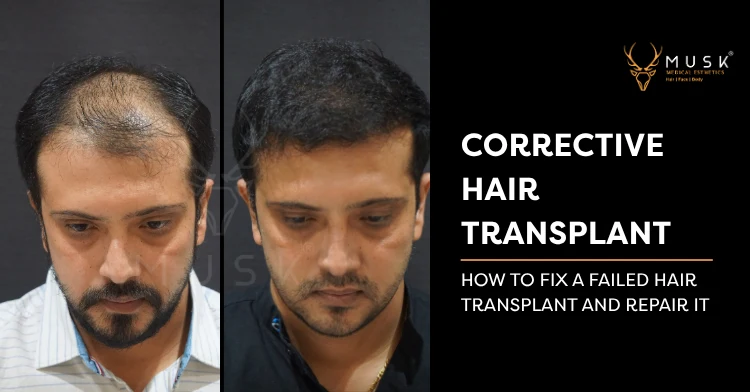Best Afro Hair Transplant in India
What is Afro Hair Transplant?
An Afro hair transplant is a highly specialized surgical procedure designed to address hair loss in individuals with African-textured hair. It involves extracting healthy, curly hair follicles from a donor area of the scalp and carefully transplanting them to areas where hair is thinning or receding. This technique offers a permanent, natural-looking solution that respects the unique characteristics of Afro hair.
In India, surgeons with expertise in Afro hair are increasingly in high demand. They use advanced methods to ensure the results honor the natural curl pattern and dense appearance of the hair, allowing you to style it with confidence. The primary goal is to restore the hairline and add density, creating a fuller look that integrates perfectly with your existing hair.
Before & After Images (Afro Hair Transplant)
What are the Causes of Hair Loss?
Understanding the root causes of hair loss in individuals with Afro-textured hair, from genetics to styling practices, is the first step toward an effective solution.
What are the Benefits of an Afro Hair Transplant?
An Afro hair transplant provides life-changing benefits for those dealing with hair loss:
Restores a Natural Hairline
Expert surgeons design a hairline that complements your facial features and respects the natural look of Afro-textured hair, ensuring the results are completely undetectable.
A Permanent, Lasting Solution
The procedure uses your own hair follicles from areas resistant to balding. This means the transplanted hair will continue to grow for a lifetime, offering a reliable and permanent end to hair loss worries.
Boosts Confidence and Versatility
Restoring your hair's fullness can have a massive impact on your self-esteem, giving you the freedom to wear your hair naturally or in various styles without feeling self-conscious.
Low Maintenance and Natural Growth
Once the healing phase is over, the new hair grows just like your natural hair. It requires no special products or routines beyond your regular hair care, allowing for easy maintenance.
Excellent Coverage and Fullness
The curly nature of Afro hair provides a significant advantage. Each strand covers more surface area, meaning fewer grafts are often needed to achieve an appearance of excellent density and fullness.
Safe Procedure with Proven Results
Performed by a specialist surgeon, the procedure is safe and is carried out under local anesthesia for your comfort. Modern techniques ensure high graft survival rates and successful, natural-looking outcomes.
Informative Videos about Hair Transplant
Who is an Ideal Candidate for an Afro Hair Transplant?
The best candidates for an Afro hair transplant are individuals with a clear pattern of hair loss who have realistic expectations about the results. A thorough consultation is essential to determine if the procedure is right for you.
To be considered an ideal candidate, you should generally meet the following criteria:
- Sufficient Donor Hair: You need a healthy, dense supply of hair at the back or sides of your head to serve as a stable donor area for the follicles.
- Diagnosed Hair Loss Pattern: The transplant is most effective for conditions like pattern baldness or traction alopecia, rather than diffuse, all-over thinning where the donor area is also weak.
- Good Overall Health: Being in good general health ensures a safer procedure and a smoother recovery, minimizing the risk of any potential complications.
- Realistic Expectations: It is vital to understand that the goal is to create a significant, natural-looking improvement in density and coverage, tailored to the unique qualities of your hair.
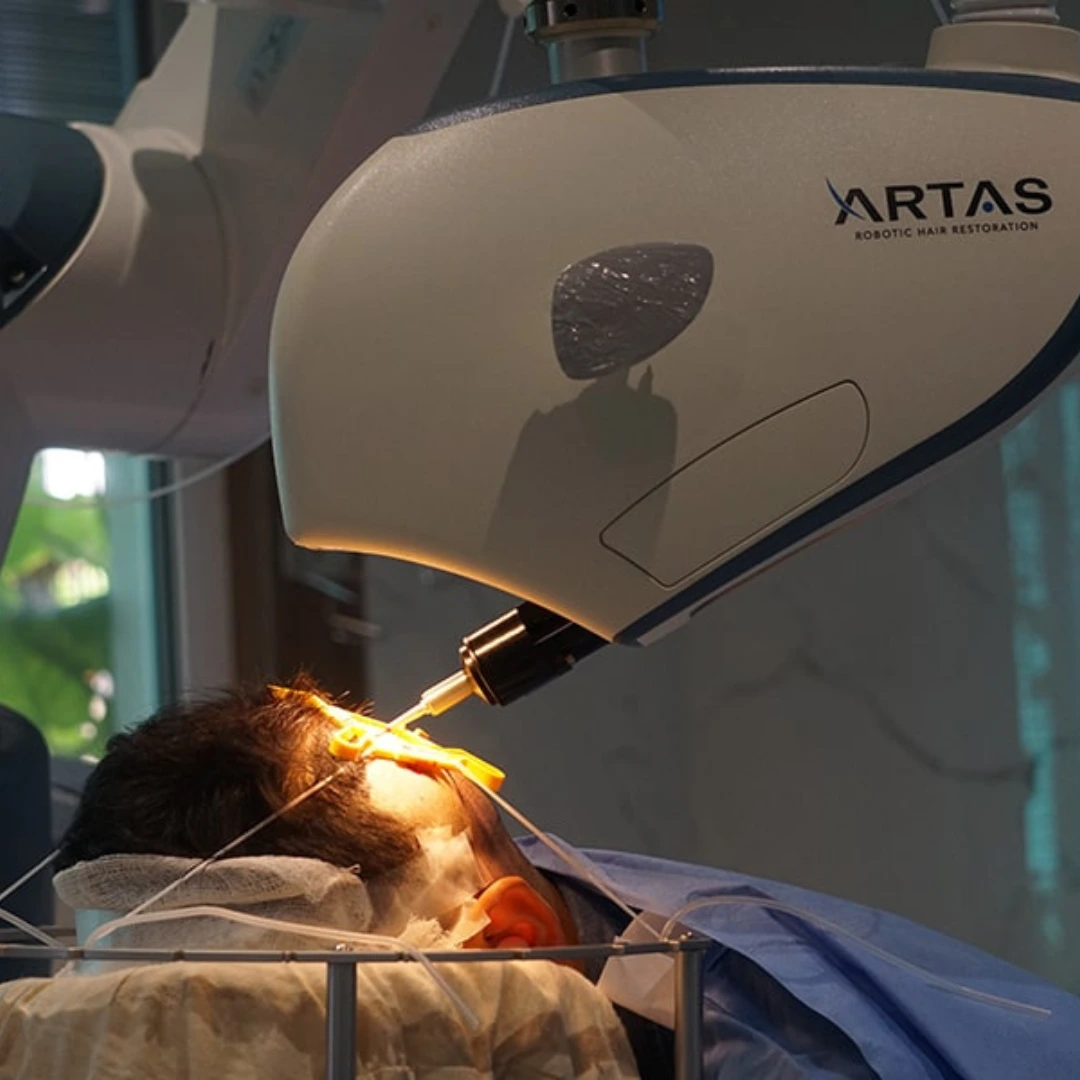
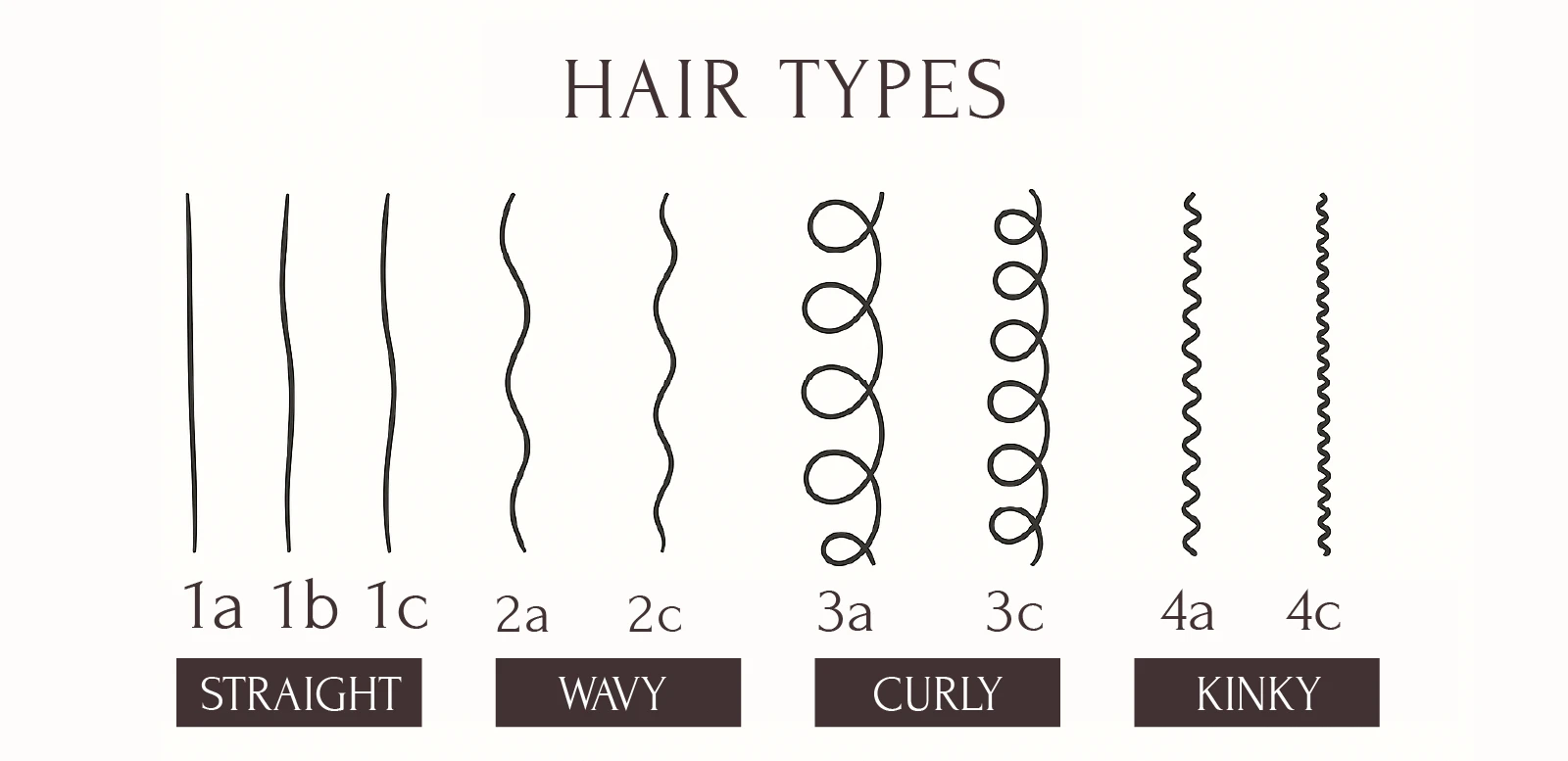
Types of Afro Hair
To understand the best approach for a hair transplant, it's helpful to use the standard Hair Type guidelines. This system classifies hair into different categories based on its curl pattern, which is crucial for planning a successful procedure. Afro-textured hair typically falls into the following types:
- Type 3 – Curly Hair: This type has a unique, fine, and soft texture with a "q" shaped pattern. It has a lot of body but often lacks sheen, can be prone to frizz, and tends to straighten when wet and curl as it dries.
- Type 4 – Coily / Kinky Hair: This hair is very tightly curled and wiry. It is further divided into sub-categories:
- 4a hair: Features a loose coil where the strands have a distinct spiral shape.
- 4b hair: Has a much tighter kink, with strands forming a zig-zag "z" shape. This hair type is often the most fragile and driest.
Why very few surgeons attempt hair transplant in African?
Many surgeons are hesitant to perform hair transplants on individuals with Afro-textured hair due to the unique and complex challenges it presents. Successfully performing this procedure requires more than general hair transplant knowledge; it demands specialized training, tools, and a deep understanding of the hair's distinct anatomy. The primary reasons include:
Why Afro Hair Transplant Surgeries Are Complicated?
Afro hair transplant surgeries are considered one of the most complex hair restoration procedures due to the unique biological structure of the hair and skin. The main complexities are:
Success Stories of Hair Transplant at Musk Clinic
India's Only Premier Clinic for ARTAS® Robotic Afro Hair Transplant
Experience the next generation of hair restoration with the ARTAS® 9x Robotic System, exclusively at Musk Clinic. This advanced technology eliminates the guesswork and human error of manual procedures. For you, this means a faster, more comfortable experience and results so natural, no one will know you had a procedure done.
Ready to Experience the Future of Afro Hair Restoration?
Join hundreds of satisfied patients who have transformed their lives with ARTAS® technology at Musk Clinic.
ARTAS® Clinic in India
Graft Survival Rate
Faster Procedure
What Should You Consider Before an Afro Hair Transplant?
How is Afro Hair Transplant Procedure Performed?
An Afro hair transplant is a meticulous procedure requiring both technical skill and artistry. While every patient’s journey is customized, the process generally follows these four key steps.
Techniques to Provide the Best Afro Hair Transplant in India?
To provide the best afro hair transplant in India, Clinics typically utilize these 2 most popular techniques:
FUE is a minimally invasive technique where individual hair follicles are extracted from the donor area (usually the back or sides of the head) and transplanted to the recipient area. This technique leaves tiny scars that heal quickly, making it popular among patients.
Advantages:
- Less Scarring: FUE leaves minimal scarring at the donor site, making it a cosmetically desirable option for many.
- Faster Healing: Due to the minimally invasive nature, FUE generally boasts quicker healing times.
- Larger Donor Area: Hair follicles can be harvested from a broader area on the scalp compared to FUT.
- Location: Costs may vary slightly depending on the clinic’s location within India. Tier-1 cities might have slightly higher costs compared to smaller towns.
FUT involves removing a strip of scalp from the donor area and dissecting it into individual follicular units for transplantation. This method can yield a higher number of grafts in a single session but leaves a linear scar that requires sutures.
Advantages:
- Cost-effective: FUT is generally less expensive than FUE.
- Faster procedure: For larger grafts, FUT can be a quicker procedure compared to FUE.
What is the Recovery Process After an Afro Hair Transplant?
Let's walk through the healing timeline together to ensure a successful and comfortable recovery.
You can return to most daily activities, but rest is your priority. You'll experience mild swelling and tenderness as your scalp begins its healing journey.
Scabs will form and naturally fall off. We'll provide detailed guidance on how to wash your hair gently during this sensitive period.
The "shedding phase" begins—this is completely normal! The transplanted hairs will fall out, but the follicles underneath remain safe and are preparing for new growth.
New, fine hairs will begin to sprout, marking the start of your transformation. This is when you'll first see the promise of your new look!
You'll notice significant growth and increasing density as your hair continues to strengthen and thicken. The excitement builds!
Your final, spectacular results are visible! The hair will have matured in both thickness and length, giving you the full, natural-looking results you've been waiting for.
How Much is the Success Rate of Afro Hair Transplant in India?
Afro Hair transplant in India has a high success rate up to 98%. However, the success rate always depends on individual factors, circumstances, and the expertise under which it is performed.
Musk Clinic has a proven record of successful Afro hair transplant treatments with great outcomes. With our detailed attention to a patient’s current circumstances and safety measures, we ensure to deliver the best Afro hair transplant solutions with a success ratio of 95-100%
What is the Cost of Afro Hair Transplant in India?
The cost of Afro hair transplants in India is quite affordable compared to that in other developed nations, making it an attractive destination for individuals seeking this procedure. India has gained recognition for offering high-quality Afro hair transplant services 5-6 times lesser that meet international standards at a fraction of the cost found elsewhere.
The price of an Afro hair transplant in India typically depends on various factors associated with the procedure. Key factors influencing the cost include the number of hair grafts needed to cover the bald area. Each hair graft generally costs varying based on factors such as the clinic’s reputation, the expertise of the hair transplant surgeon, and its location
Musk Clinic is one of the top Afro hair transplants clinics in India, offering the best hair loss solutions in India.
The affordability, combined with the availability of skilled surgeons and world-class facilities, has made us the best place for Afro hair transplants, attracting individuals from around the world seeking effective solutions for hair loss.
Know Your Afro Hair Transplant Cost Today!
Factors That Decide the Cost of Afro Hair Transplant in India?
Ethical Considerations for Afro Hair Transplant
Patients deserve ethical care during afro hair transplant procedures. They should expect:
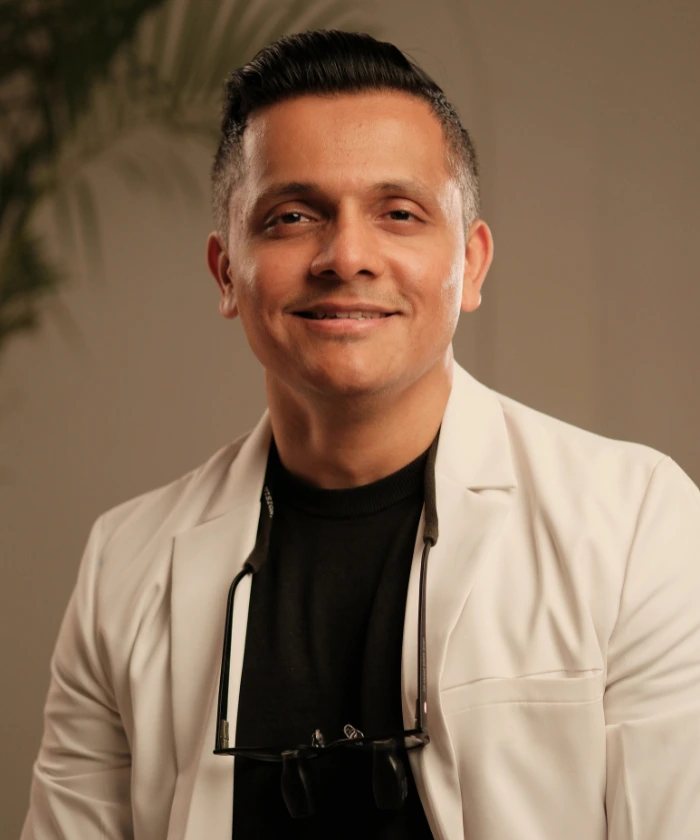
Dr. Anand Shah: The Professional Behind Robotic Hair Transplant with ARTAS 9X
Dr Anand B. Shah, is a board-certified Maxillofacial & Craniofacial surgeon who is highly skilled in cosmetic facial and hair restoration surgery and has exclusively practised the same, internationally and nationally. His career span has been marked with passionate and focused learning, keen and industrious training and in-depth guidance by some of the world’s best leading experts in the field of Hair Restoration. Following his post-graduation, Dr Shah underwent a highly reputed fellowship in Craniofacial Surgery under GCCRI which is affiliated with DCKH (Deutsche Cleft Kinder Hilfe), Germany. It was during his fellowship tenure that Dr Anand developed a keen interest in Hair Restoration Surgery under the esteemed guidance of fellowship director Dr Shyam Sheth.
He underwent a surgical preceptorship in orthognathic surgery from ‘UZ Brussel’ University, Belgium under Dr Maurice Mommaerts.
Read MoreRecognized Physician Memberships



Recognized By
Why Choose Musk Clinic?
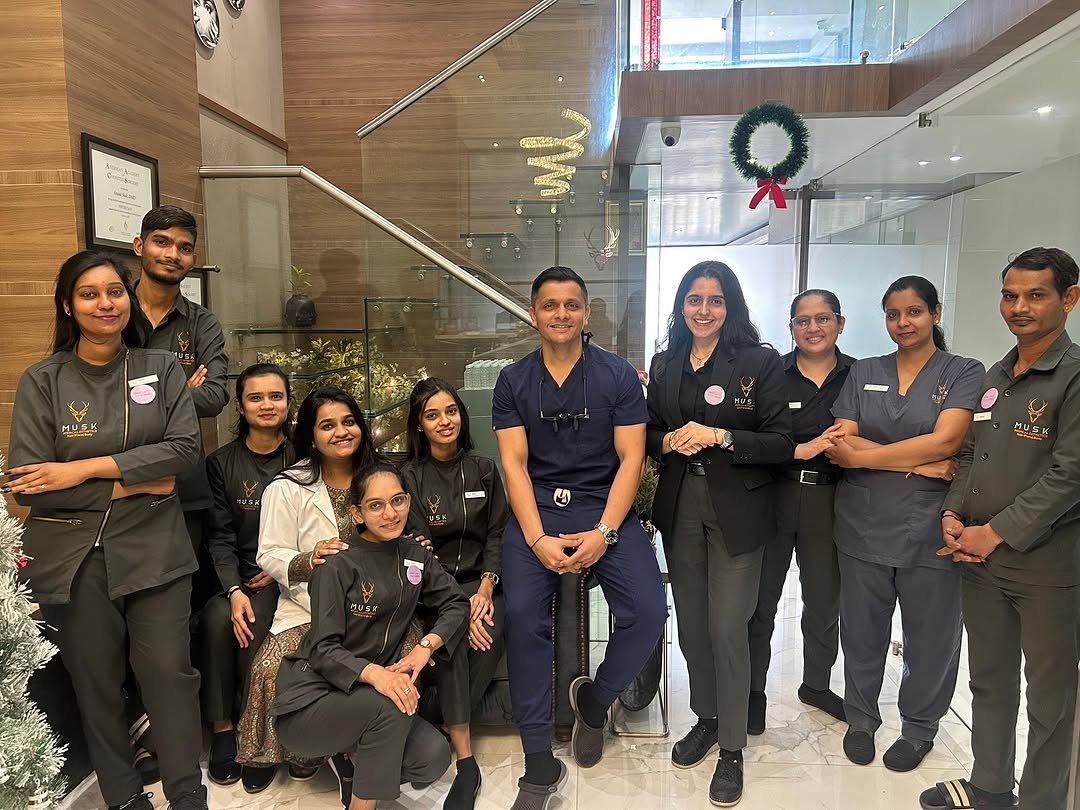
Real People. Real Care. Real Results.
At Musk Clinic, excellence is never a solo effort.
We are a team of skilled doctors, experienced surgeons, certified therapists, and compassionate staff—working together to deliver world-class care in Robotic Hair Transplants, Advanced Skin Treatments, and Body Aesthetics.
With cutting-edge technology and a shared vision of delivering results with care, our team ensures every patient feels confident, comfortable, and cared for at every step of their transformation journey.
When you choose Musk Clinic, you're not just choosing a treatment—you're choosing a team that's committed to your well-being and success.









